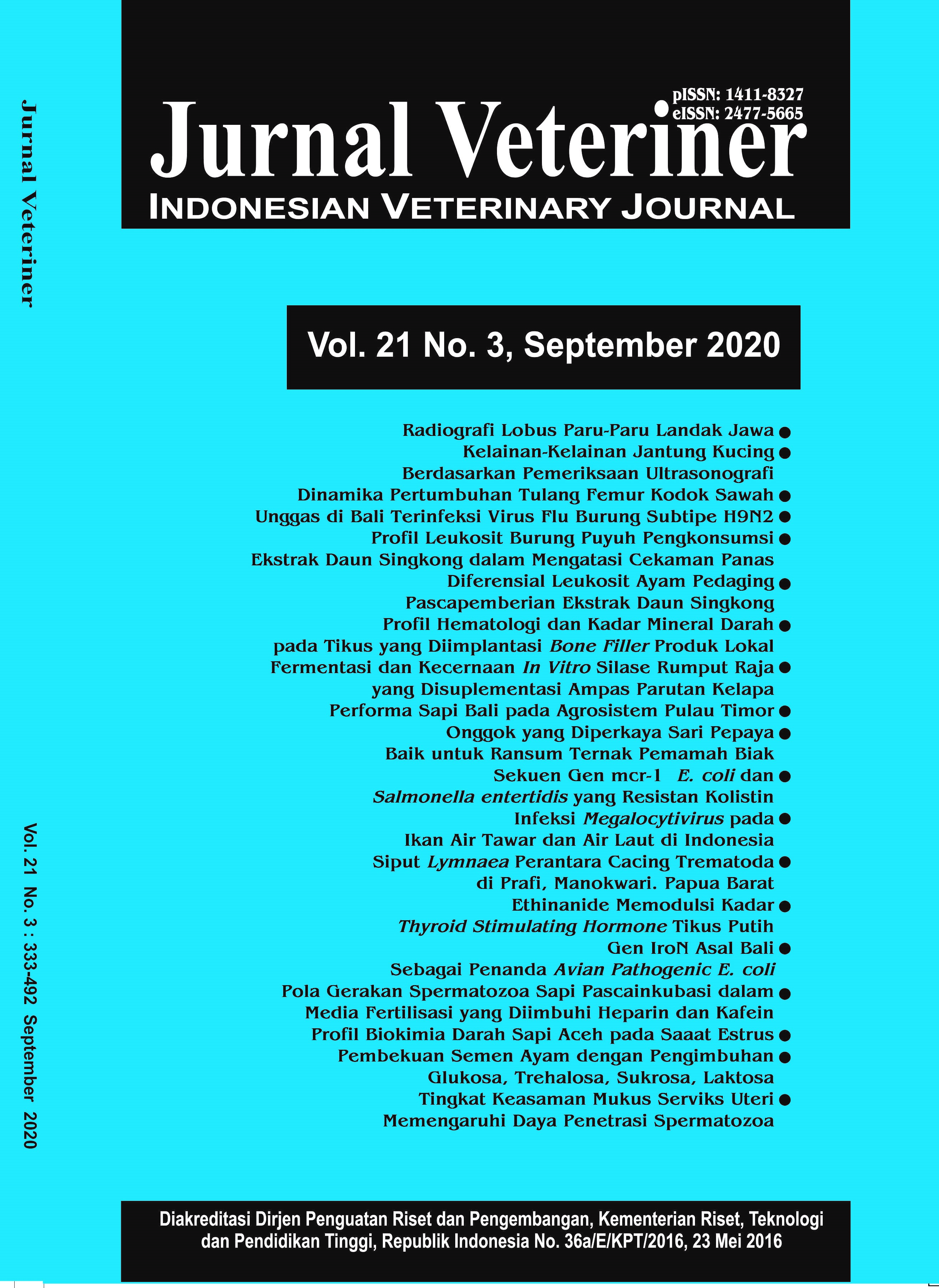A MEGALOCYTIVIRUS INFECTION IN MARINECULTURE AND FRESHWATER FISH IN SEVERAL REGIONS IN INDONESIA
INFEKSI MEGALOCYTIVIRUS PADA BUDIDAYA IKAN AIR LAUT DAN IKAN AIR TAWAR DIBEBERAPA PROPINSI DI INDONESIA
Abstract
Megalocytivirus is a member of Iridoviridae family and causes very high economic losses in fish farming. Megalocytivirus has three species, Infectious Spleen and Kidney Necrosis Virus (ISKNV), Red Sea Bream Iridovirus (RSIV), and Turbot Reddish Body Iridovirus (TRBIV). This study aims to detect Megalocytivirus and identify the species (ISKNV, RSIV and TRBIV) in order to determine the latest status of Megalocytivirus infection in Indonesia. Samples were taken from marineculture include grouper, barramundi and silver pomfret, while in freshwater fishes were gourami, tilapia and freshwater ornamental fish from several regencies in Indonesia. Selected fishes were fishes with clinical signs such as the body looks dark, decreased appetite, mortality rate above 40%, less active in swimming (lethargy) and separating from other fish groups. The method for virus detection using coagglutination test and species identification using the Polymerase Chain Reaction (PCR) with the target gene Major Capsid Protein (MCP). All samples from North Sumatera Province showed negative results both serologically and molecular, while 11 other provinces gave varying results. All samples of freshwater fish were infected with ISKNV, fishes from marineculture were infected with ISKNV and RSIV. The TRBIV virus was not detected in all samples.



















